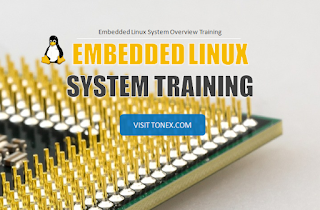
Length: 2 Days
Embedded Linux course will give you the step-by-step framework for developing an embedded Linux product. You’ll learn the methods used to adapt the Linux kernel and user-space libraries and utilities to particular embedded environments, such as those in use in consumer electronics, military, medical, industrial, and auto industries.
Embedded Linux System Overview training course gives you a solid understanding of Linux kernel and libraries and utilities for embedded applications. Learn about tools and techniques to develop an embedded Linux device.
After successful completion of the course, the attendees will have a good understanding of:
Explore the Linux kernel architecture
Increase your understanding of real-time and embedded systems
Gain essential knowledge of Linux embedded systems design and programming
Gain practical knowledge of how to adapt the kernel to a custom embedded application
Understand the concepts of task scheduling and synchronization, resource management, inter-task communications, and interrupt handlers.
Learn how to populate libraries and application user-spaces for embedded systems
Learn how to program a Linux embedded device
Learn about HAL (Hardware Abstraction Layer)
Gain practical knowledge of how to write MIPI-based embedded Linux device drivers for camera (CSI-2) and display (DSI)
Prerequisites:
The course is primarily intended for experienced developers, programmers, and engineers who are interested in learning how to adapt Linux to an embedded system. You should be familiar with basic Linux utilities, know the C programming language, and be comfortable developing for Linux or UNIX. Pre-class preparation material will be provided before class.
Course Agenda:
Introduction to Embedded and Real-Time Systems
Embedded Linux Platform Specification
Anatomy of an Embedded Linux System
Building Embedded Linux Systems
Case Studies
Request more information regarding embedded linux system. Visit Tonex course link
Embedded Linux System Training
Comments
Post a Comment